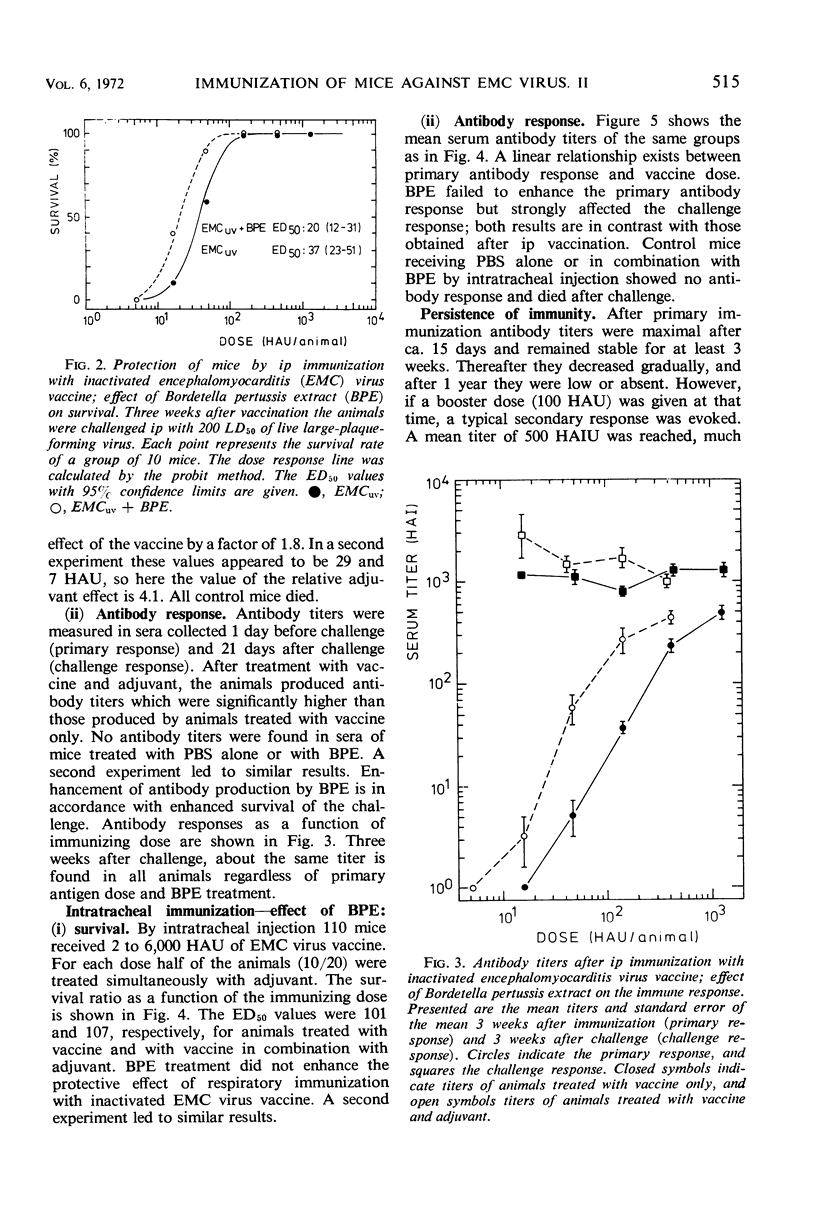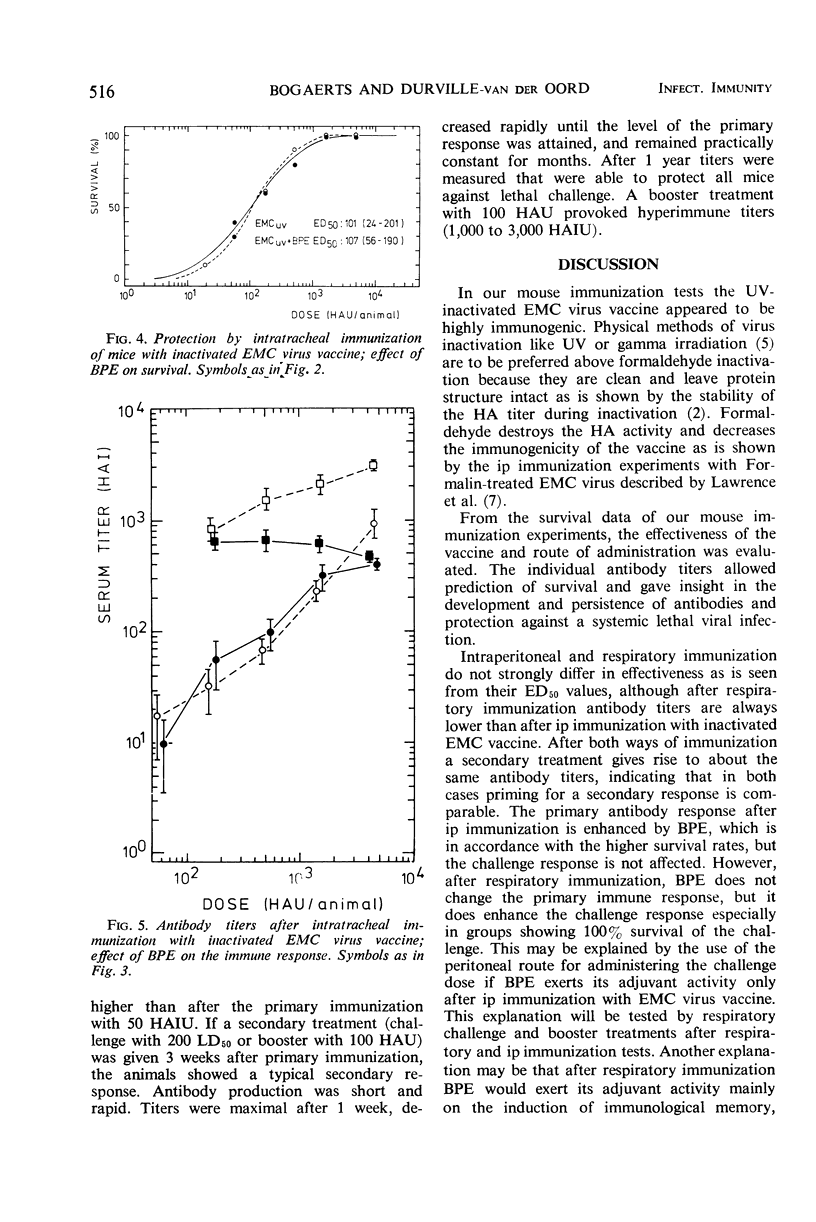Abstract
Mice were immunized by intraperitoneal (ip) or respiratory administration of ultraviolet-inactivated virus alone or with Bordetella pertussis extract (BPE) as an adjuvant. The effect of immunization was tested by determination of antibody titers and by survival of a lethal challenge with 200 LD50 of a virulent (large-plaque variant) strain of EMC virus. For plain vaccine the ip 50% effective dose (ED50) was 37 hemagglutination units (HAU; ca. 4 × 106 plaque-forming unit equivalents); with adjuvant the ip ED50 was reduced to 20 HAU. After respiratory immunization by intratracheal injection, an ED50 value of 100 HAU was found, which was not affected by BPE. After ip vaccination the primary immune response was enhanced by BPE, but the challenge response, measured 3 weeks after challenge, was unaffected. Respiratory immunization induced a primary response which was not influenced by BPE, but here the challenge response was enhanced by the adjuvant. After secondary treatment (challenge or booster vaccination) serum antibodies and protection against challenge persisted for at least 1 year.
Full text
PDF




Selected References
These references are in PubMed. This may not be the complete list of references from this article.
- Akers T. G., Bond S. B., Papke C., Leif W. R. Virulence and immunogenicity in mice of airborne encephalomyocarditis viruses and their infectious nucleic acids. J Immunol. 1966 Sep;97(3):379–385. [PubMed] [Google Scholar]
- Bogaerts W. J., Durville-van der Oord Immunization of mice against encephalomyocarditis virus. I. Purification, concentration, and inactivation of encephalomyocarditis virus. Infect Immun. 1972 Oct;6(4):508–512. doi: 10.1128/iai.6.4.508-512.1972. [DOI] [PMC free article] [PubMed] [Google Scholar]
- Friedman R., Maenza R. M. Peroral infection and resistance to reinfection with encephalomyocarditis virus in the mouse. J Infect Dis. 1968 Apr;118(2):125–134. doi: 10.1093/infdis/118.2.125. [DOI] [PubMed] [Google Scholar]
- Gruber J. Immunogenicity of purified venezuelan equine encephalitis virus inactivated by ionizing radiation. Infect Immun. 1971 Apr;3(4):574–579. doi: 10.1128/iai.3.4.574-579.1971. [DOI] [PMC free article] [PubMed] [Google Scholar]
- Gruber J. Purification, concentration, and inactivation of Venezuelan equine encephalitis virus. Appl Microbiol. 1970 Sep;20(3):427–432. doi: 10.1128/am.20.3.427-432.1970. [DOI] [PMC free article] [PubMed] [Google Scholar]
- Lawrence T. G., Jr, Collins H. The effect of parenteral and oral immunization on encephalomyocarditis infection in mice. Proc Soc Exp Biol Med. 1970 Mar;133(3):1066–1069. doi: 10.3181/00379727-133-34626. [DOI] [PubMed] [Google Scholar]
- Nagel J. Isolation from Bordetella pertussis of protective antigen free from toxic activity and histamine sensitizing factor. Nature. 1967 Apr 1;214(5083):96–97. doi: 10.1038/214096a0. [DOI] [PubMed] [Google Scholar]
- Prato C. M., Akers T. G. The immunologic response of the mouse to aerosols of an attenuated encephalomyocarditis virus strain. J Immunol. 1969 Jul;103(1):79–86. [PubMed] [Google Scholar]


